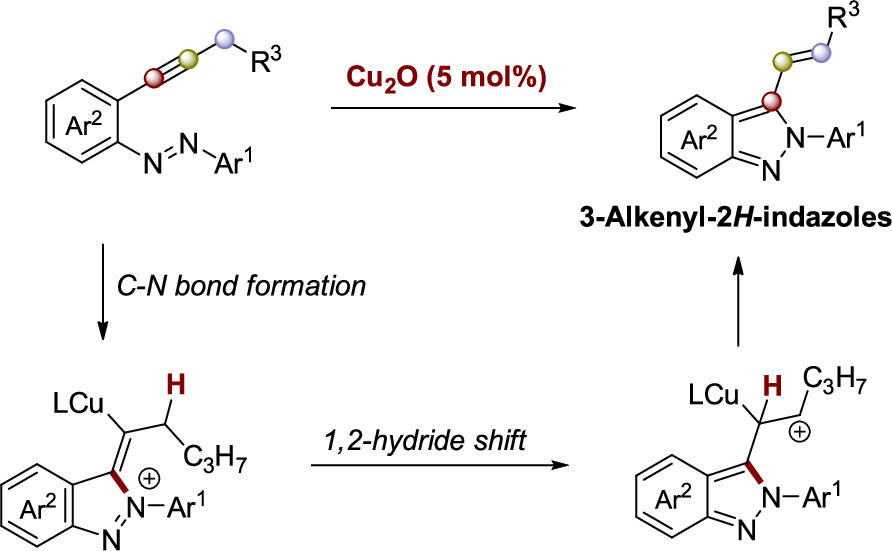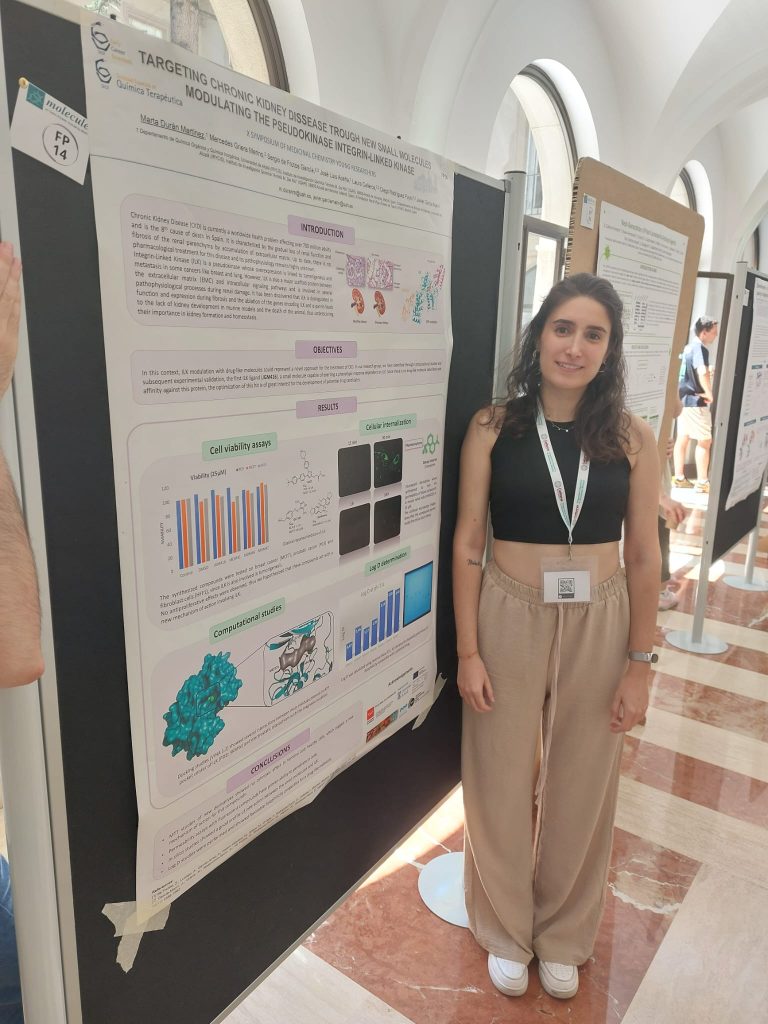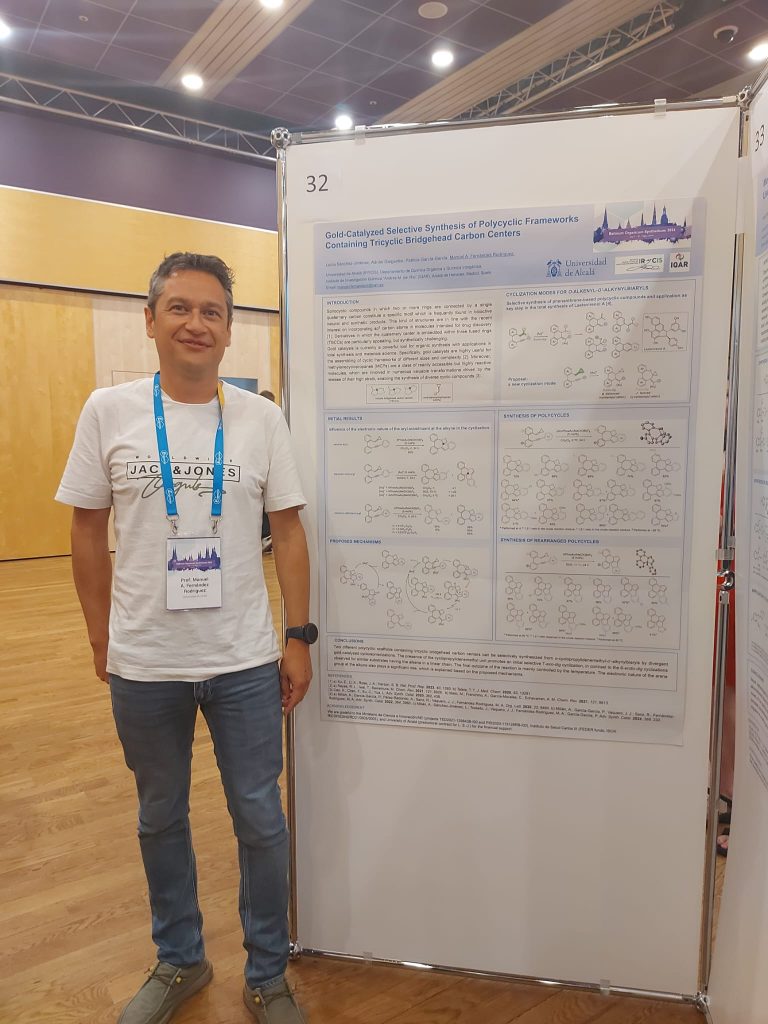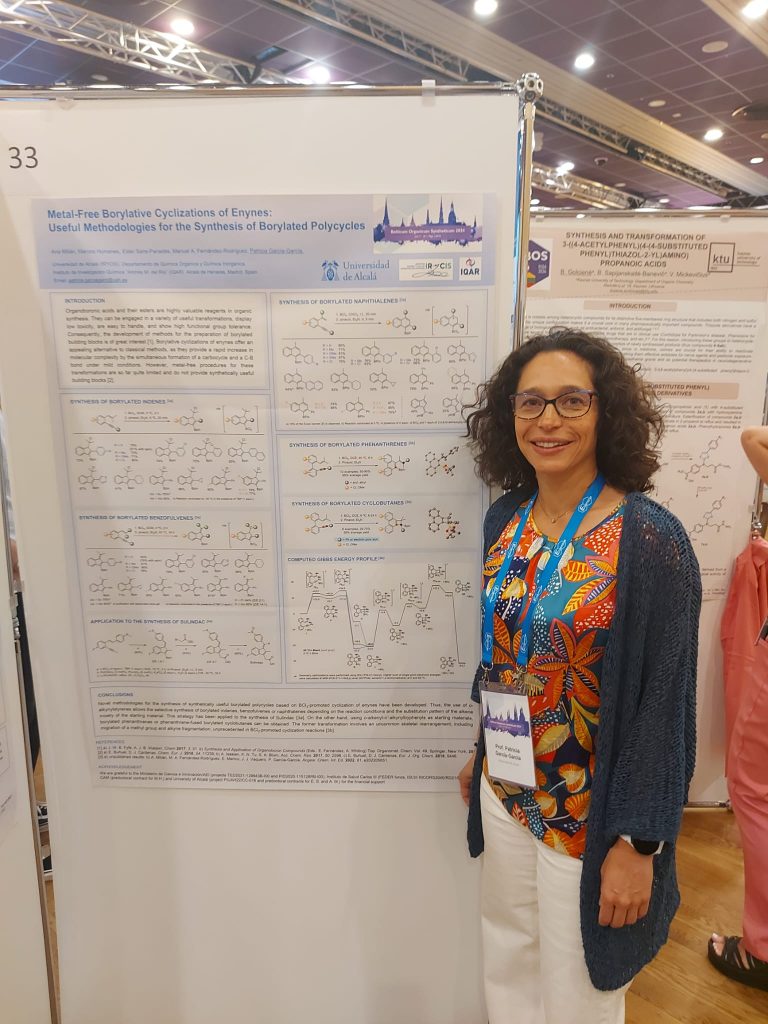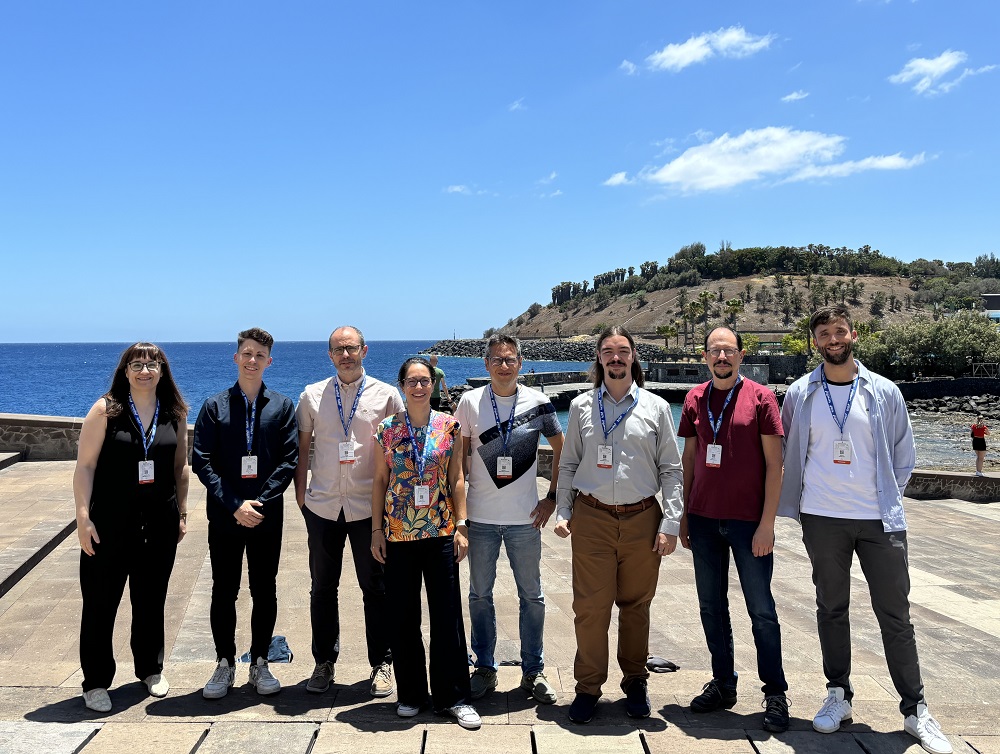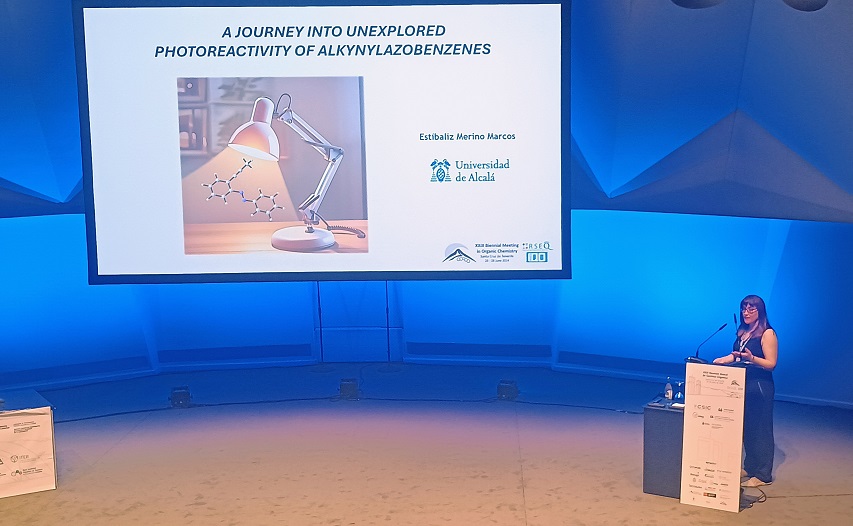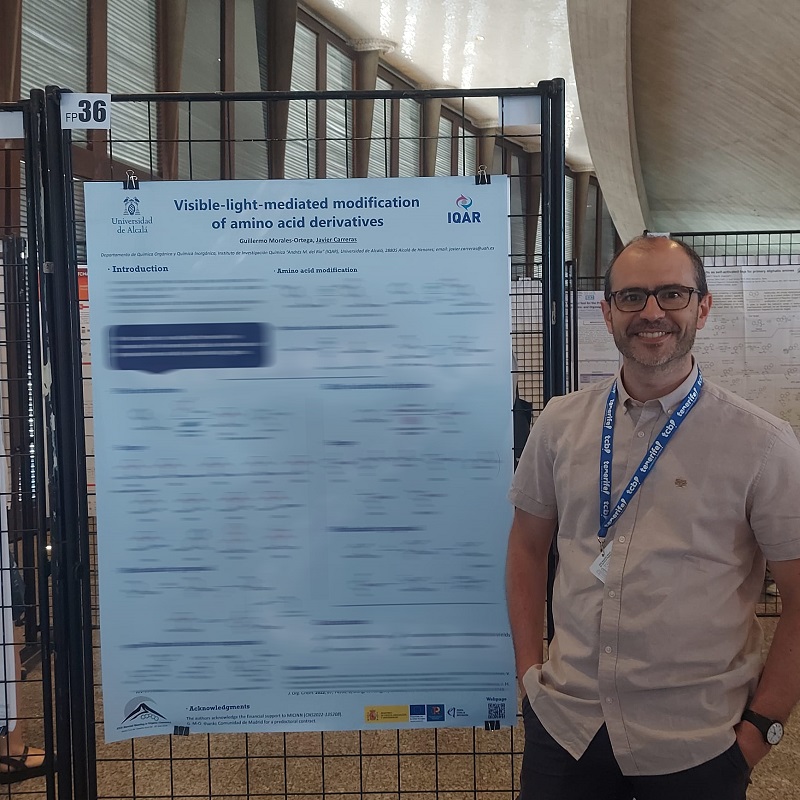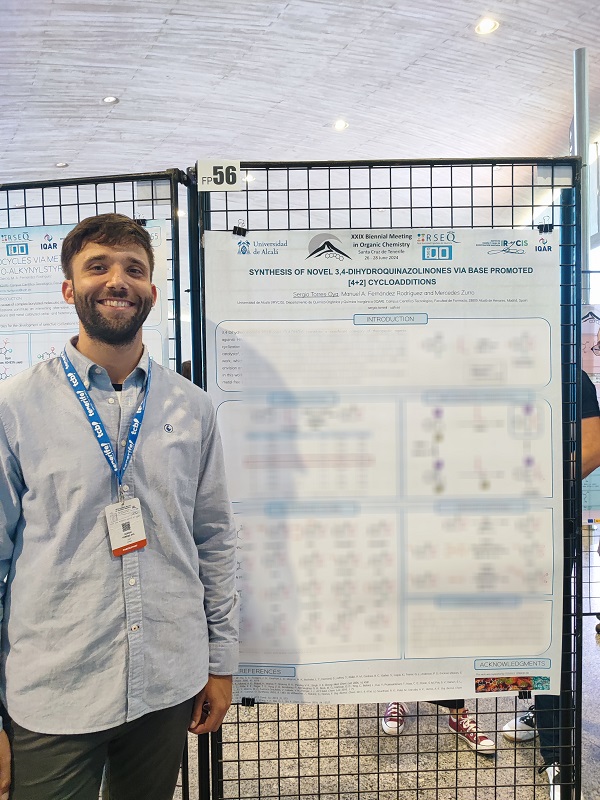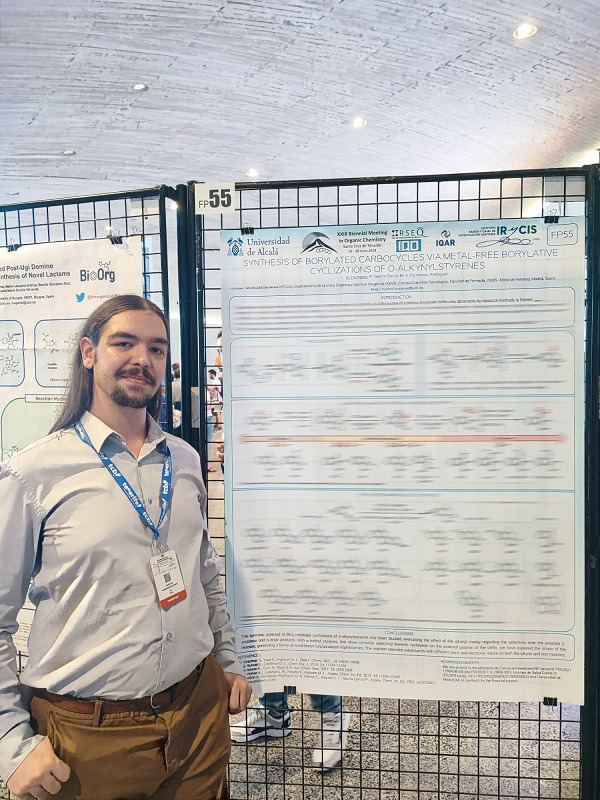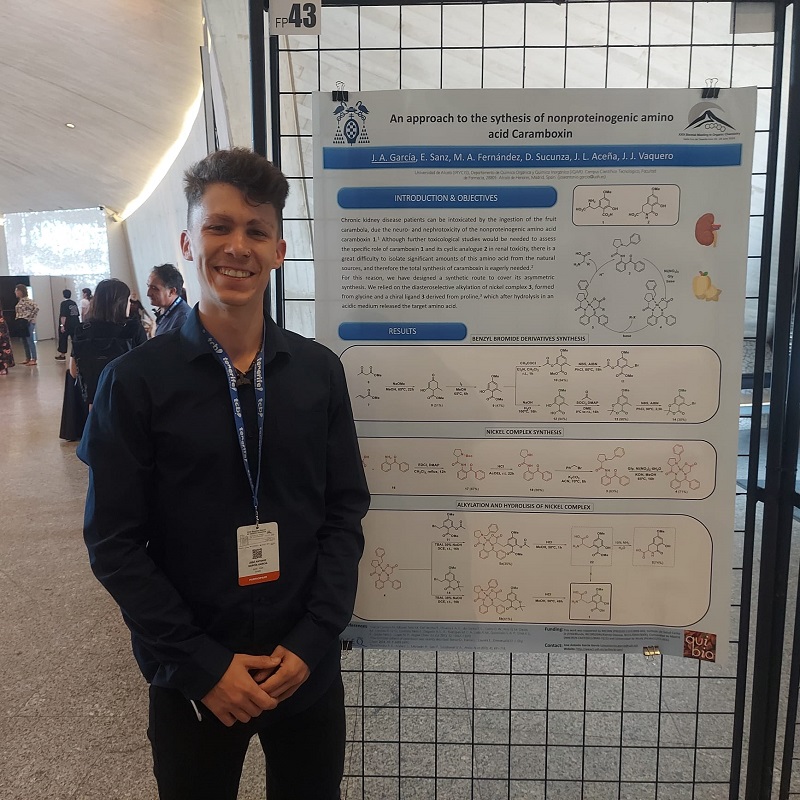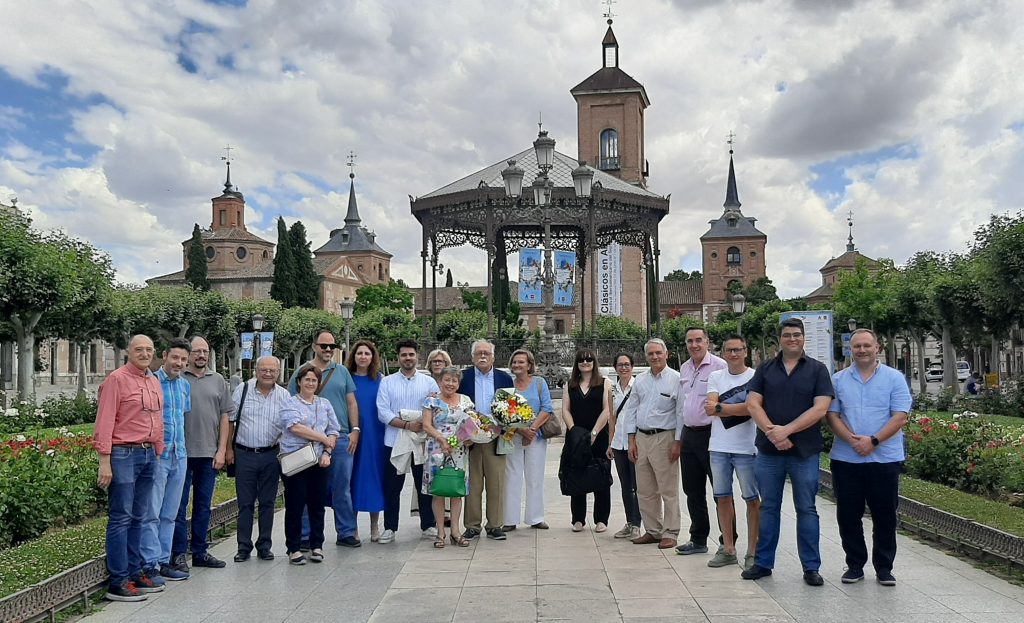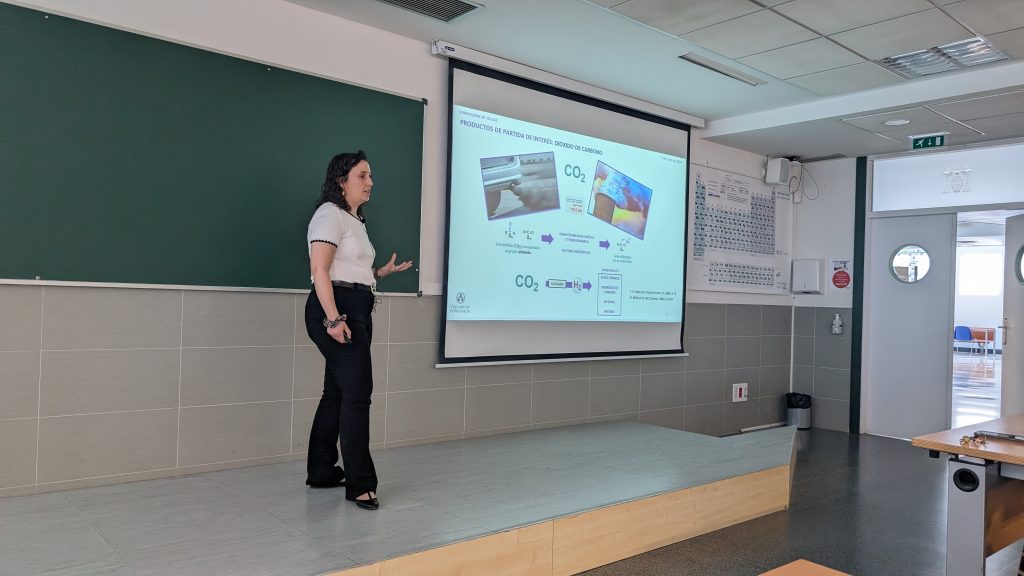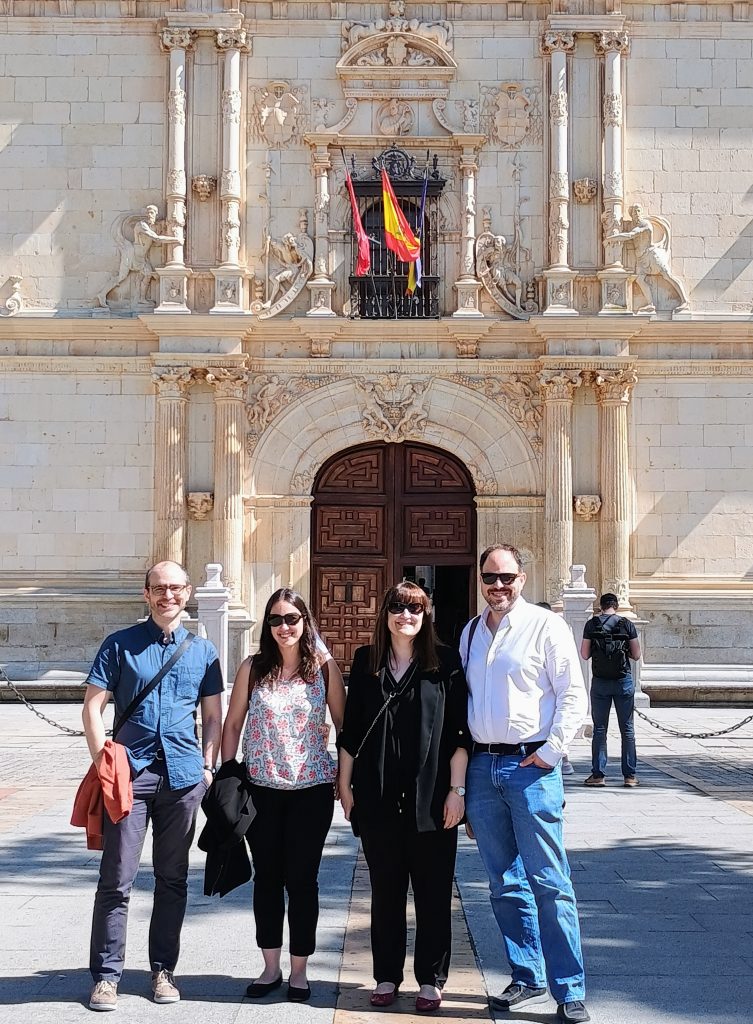Copper-Catalyzed Hydroamination of 2-Alkynylazobenzenes: Synthesis of 3-Alkenyl-2H-Indazole
Clara Mañas, Juan Herrero-Bourdieu, Estíbaliz Merino*
A copper-catalyzed intramolecular synthesis of 3-alkenyl-2H-indazoles from 2-alkynylazobenzenes is described. The reaction proceeds in a single step via C–N bond formation and a subsequent 1,2-hydride shift, affording products in high yields. DFT calculations suggest the 1,2-hydride shift as the rate-determining step. Further derivatization enables functionalization of the 3-alkenyl-2H-indazoles.
J. Org. Chem. 2024.
DOI: 10.1021/acs.joc.4c02144
